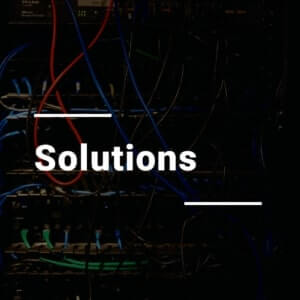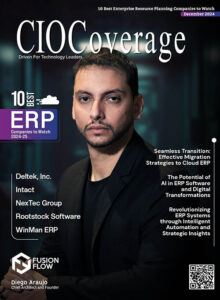 While Multi-Cloud setups are already the new normal in many companies, it is still not much more than another buzzword for others. Multi-Cloud does not multiply value per se. However, based on a capability-focused approach, combining the best parts from various worlds helps reduce risks, save costs, and boost innovation.
While Multi-Cloud setups are already the new normal in many companies, it is still not much more than another buzzword for others. Multi-Cloud does not multiply value per se. However, based on a capability-focused approach, combining the best parts from various worlds helps reduce risks, save costs, and boost innovation.
More than 80% of Accenture’s largest customers in the DACH region are implementing a Multi-Cloud strategy. In other words, a vast majority uses the services from various public cloud providers, host applications on different platforms or combine multiple private and public clouds (Hybrid Cloud). Do they just follow a buzzword-driven trend? Or is Multi-Cloud a must to stay competitive? Why do so many companies consider Multi-Cloud as the future of cloud computing?
When implementing a Multi-Cloud strategy, a company uses different public cloud providers (for storage, compute, cloud-native development etc.) or combines private and public cloud services (Hybrid Cloud). Dominating the market, the three large hyperscalers AWS (appr. 35% market share), Microsoft Azure (20%) and Google Cloud (10%) provide data centers around the globe and offer a comprehensive product portfolio including multiple Multi-Cloud solutions such as AWS Outposts, Azure Stack or Google Cloud’s Anthos.
Pluses from Multi-Cloud
As its name suggests, Multi-Cloud enables the coupling of the best from different worlds, e.g. AWS’ infrastructure services with Google Cloud’s data analytics solutions. Companies benefit in multiple ways:
– Independence: Generally speaking, Multi-Cloud helps avoid vendor lock-in and reduces both operational and commercial risks.
– Innovation: In addition to the direct advantages of cloud-native solutions, Multi-Cloud customers benefit from the innovation efforts of the cloud providers.
– Scalability & Flexibility: Based on customer needs, Multi-Cloud infrastructures scale automatically and provide flexible pricing models.
– Integration: Despite the fierce competition in the cloud market, the large hyperscalers enable compatibility, i.e. the easy integration of various services.
Of course, there is not only sunshine. Multi-Cloud companies need to have more specialized staff, let go the total control of their IT infrastructure, and master other challenges. A capability-focused approach that accommodates the customer’s current situation (cloud maturity, available skills of staff, regulatory environment etc.) is key to overcoming the downsides when embarking on a Multi-Cloud journey.
Guidance above the clouds
There are two basic ways to tackle the Multi-Cloud challenge. Some companies favour an Independence first credo with seemingly zero vendor lock-in and high integration efforts Others count on a Technology first approach with deliberate choice of solutions offered by the cloud providers and full participation in the evolution of the selected cloud providers.

When embarking on a Multi- or Hybrid Cloud journey, it is imperative to apply a framework that not only reflects the customer’s current situation in terms of skills of staff, cloud maturity and other factors, but also provides a tool landscape to build, run and govern the complete environment (Anthos for Orchestration, Terraform for Automation etc.).
Regardless of which basic approach and framework a customer opts for at the beginning of the Multi-Cloud journey, there must be clear Multi-Cloud Guiding Principles to make it work. Here is an example of how a set of guidelines could look like:
– Hyperscaler agnosticism: To ensure repeatability regardless of the chosen hyperscalers, core elements such governance services, automation, monitoring etc. should be created in an abstracted, hyperscaler-agnostic way.
– Automation first: It is highly recommendable to have workload and resource provisioning fully automated for build, run, and optimize activities.
– Harmonization: Centrally managed service standards, policies etc. improve continuity, availability, and performance.
– Technology Stacks: The use of platform blueprints “from the catalogue”, cloud architecture standards, cloud-native standards etc. increase the standardization level.
– Book of Standards: Fundamental architectural standards (e.g., hardened OS images) in a central index simplify the migration in an exit scenario.
– Cattles not Pets: Paradigms such as patch by replacement, auto-scale etc. at the core help establish architectural patterns for create and run.
Depending on your company’s specific situation, some parts of the above-mentioned framework and guiding principles may be critical, while others are rather negligible – which may completely change over time. From more than 34’000 cloud projects, the more than 100’000 cloud specialists at Accenture know very well that every Multi-Cloud project is unique. Reach out to us to discuss how we can co-produce a tailor-made Multi-Cloud solution for your company by harnessing our experience and close collaboration with all major cloud providers.















